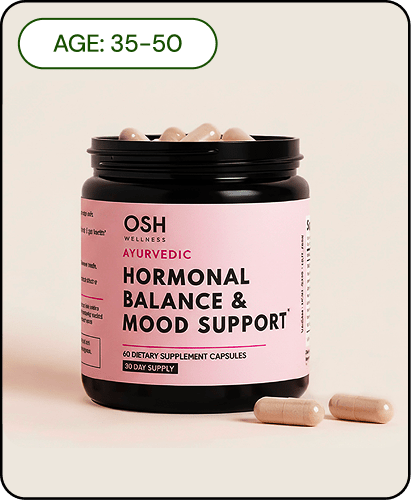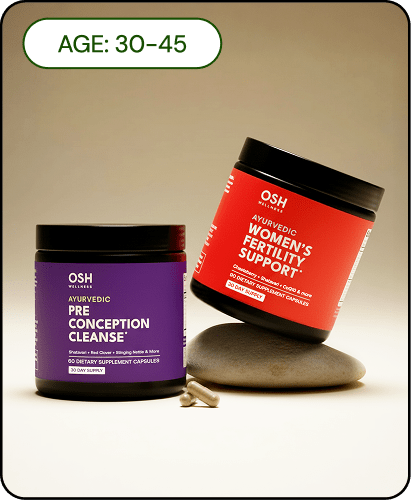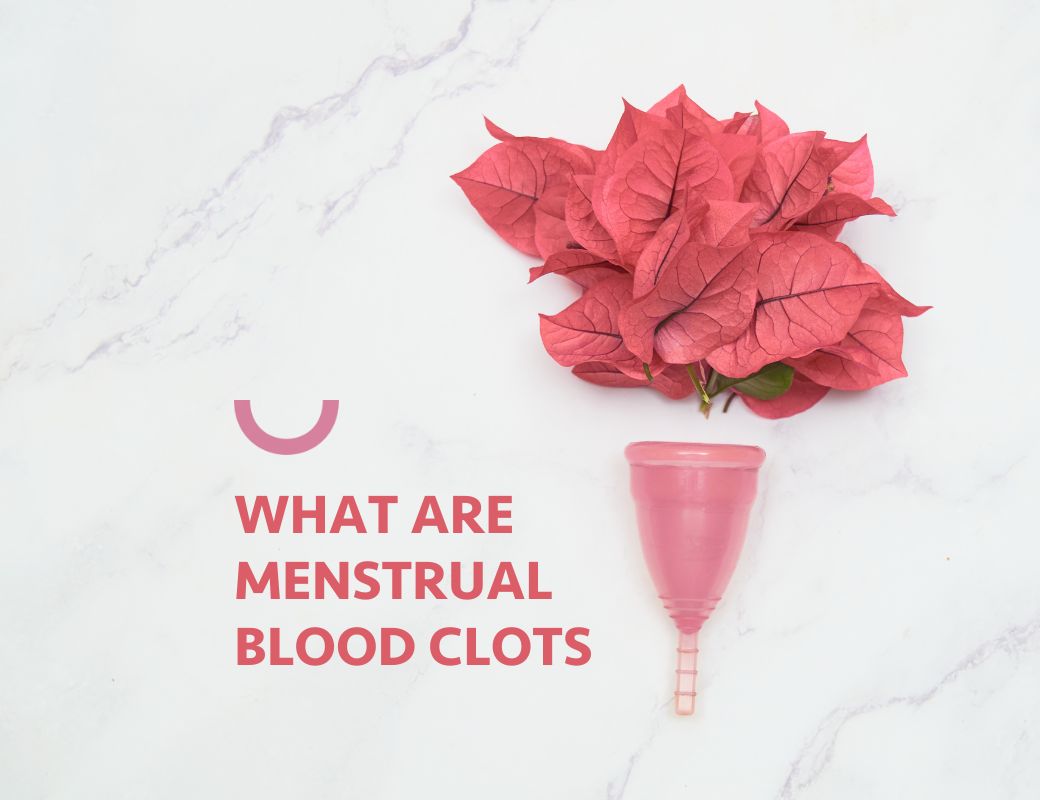Last Updated: Oct 26, 2025
Table of Contents
Menstrual cycles can be full of surprises, and one of those surprises might be finding blood clots. While it can be a bit alarming to see clumps of blood on your pad, tampon or cup, it's important to know that this is often a normal part of menstruation. But how do you distinguish between what’s typical and what might be a cause for concern? Let’s break it down.
Blood Clots – The What, Why, and How

Blood clotting in your period is actually quite common. These clots are jelly-like masses of blood and tissue that can vary in size and color, often appearing bright or dark red. They usually form when menstrual blood pools in the uterus or vagina before it is expelled from the body. Clots can often be a sign that your body is doing its job by keeping the bleeding in check. If your flow is particularly heavy, as it slows and thickens towards the end of your period, your body may release more clots.
However, they can also indicate that something more significant is going on, especially if they are large or accompanied by other symptoms. Understanding the causes and differences between normal and abnormal menstrual blood clots can help you determine when it’s time to consult a healthcare provider.
Causes of Menstrual Blood Clots

Several factors can contribute to the formation of menstrual clots, and they aren’t all cause for concern. Here are some common reasons for blood clotting during menstruation:
Heavy Menstrual Flow (Menorrhagia): When your flow is particularly heavy, your body produces more blood than it can shed immediately, the excess blood can form clots before leaving the body.
Hormonal Imbalances: Estrogen and progesterone are key players in regulating your menstrual cycle. An imbalance in these hormones can lead to a thicker uterine lining, which may result in heavier periods and more clots. If you are younger than 35 years, you can improve hormone balance with Cycle Care, and if you are above 35, try the Hormone & Mood Support.
Uterine Fibroids or Polyps: Noncancerous growths in the uterus can cause heavier bleeding and increase the likelihood of clotting.
Endometriosis or Adenomyosis: Conditions where uterine tissue grows outside the uterus or into the uterine wall can lead to heavier periods and clot formation.
Difference Between Normal and Abnormal Menstrual Clots

So, how do you know if the clots you’re seeing are normal or something you should be concerned about? Here’s a simple breakdown:
Normal Clots: Small clots (about the size of a dime or smaller) are typically normal, especially if they occur during the heaviest part of your period. They are usually dark red and may appear more frequently if you have a heavy flow.
Abnormal Clots: Clots larger than a quarter, especially if they occur frequently or are accompanied by symptoms like excessive bleeding, severe pain, or a sudden change in your menstrual pattern, could be a sign of an underlying issue. Large clots that look like tissue rather than blood may also warrant a call to your healthcare provider.
In early pregnancy, miscarriage can be mistaken for menstruation with abnormal clotting. But it often differs in that it causes heavy bleeding and large blood clots, typically accompanied by severe cramping. If you find yourself changing pads or tampons every hour, your period lasts longer than seven days, or you experience signs of miscarriage, it’s a good idea to get checked out by your doctor.
Maintaining Good Menstrual Health (Clots Included)
Keeping your menstrual health in check is key to managing clots and any other period-related concerns.
Lifestyle Tips for a Healthy Menstrual Cycle

Here are some lifestyle changes that can make your menstrual cycle smoother:
Track Your Cycle: Use an app or journal to monitor your period, noting any changes in flow, clot size, or symptoms. This can help you catch potential issues early.
Stay Hydrated: Drinking plenty of water helps keep your blood thin and reduces the chances of clotting.
Exercise Regularly: Physical activity improves circulation and can help regulate your menstrual cycle.
Get Regular Checkups: Routine visits to your gynaecologist can ensure that any issues, like hormonal imbalances or uterine growths, are caught and treated early.
Foods That Help with Normal Menstruation

Believe it or not, what you eat can have a big impact on your menstrual health. Certain foods can help regulate your period and reduce the chance of heavy bleeding and clots. Here are a few to consider:
Iron-Rich Foods: Spinach, lentils, and lean red meat help replenish the iron lost during heavy periods and support healthy blood flow.
Omega-3 Fatty Acids: Found in fish like salmon and flaxseeds, these healthy fats can help reduce inflammation and support balanced hormone levels.
Vitamin C: Oranges, strawberries, and bell peppers can help your body absorb iron more efficiently and may reduce heavy bleeding.
Fiber-Rich Foods: Whole grains, fruits, and vegetables help regulate your hormones and keep your digestive system healthy, which can have a positive effect on your menstrual cycle.
If you are younger than 35, you can improve hormone balance with Cycle Care, and if you are above 35, try the Hormone & Mood Support.
What If My Clots are Abnormal?
If your menstrual blood clots are abnormal, it may be best to consult your doctor. There are several treatment options they may recommend. Depending on the underlying cause treatment for abnormal menstrual clots can include:
Medications: Birth control pills, hormone therapy, or nonsteroidal anti-inflammatory drugs (NSAIDs) can help regulate your cycle, reduce bleeding, and manage clotting.
Natural Supplements: Supplements like Cycle Care and Hormone & Mood Support can help restore hormonal balance naturally.
Surgical Options: For conditions like fibroids or polyps, procedures such as a myomectomy or endometrial ablation may be recommended to remove growths or reduce the uterine lining.
Lifestyle Changes: Maintaining a healthy weight, managing stress, and eating a balanced diet can help regulate your hormones and reduce the likelihood of heavy bleeding and clotting.
The Bottom Line On Menstrual Blood Clots
Menstrual clots can be a normal part of your period, but it's essential to understand when they might signal something more serious. By keeping track of your menstrual health you can better take control of your cycle and ensure that everything is functioning as it should. If you ever have concerns about your period or notice significant changes, don’t hesitate to consult with your healthcare provider.
FAQs
What do fibroid blood clots look like?
Fibroid clots are typically small, smaller than a quarter, and dark red in color. Fibroid clots usually accompany heavier menstrual bleeding, as up to 30% of women with fibroids also experience menorrhagia (heavy bleeding).
When should I be concerned about blood clots?
Blood clotting during your period can be normal, however, exceptionally heavy clots or bleeding, those that look like tissue and not blood, or clots accompanied by pain warrant a call to your doctor. You know your body best and which clots are abnormal for your menstrual cycle.
When are period clots abnormal?
Period clots are usually abnormal if they’re abnormal for your usual cycle, but that isn’t an immediate reason to be alarmed. If your clots are large, occur with heavy bleeding or pain, or look abnormal it’s best to reach out to your doctor. If you experience minor clotting changes, it may be appropriate to track these changes and bring them up to your provider at your next appointment.
What do endometriosis clots look like?
Endometriosis clots often look similar to normal clots during your period. They can be dark or bright red in color and vary in size and texture.








